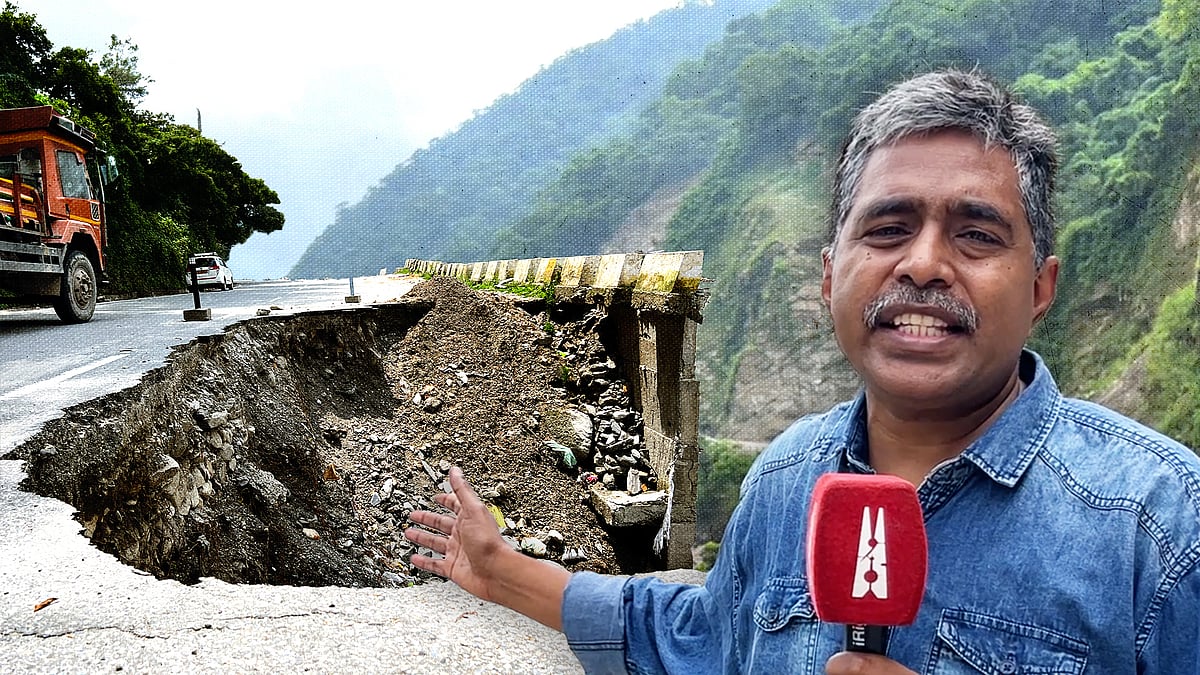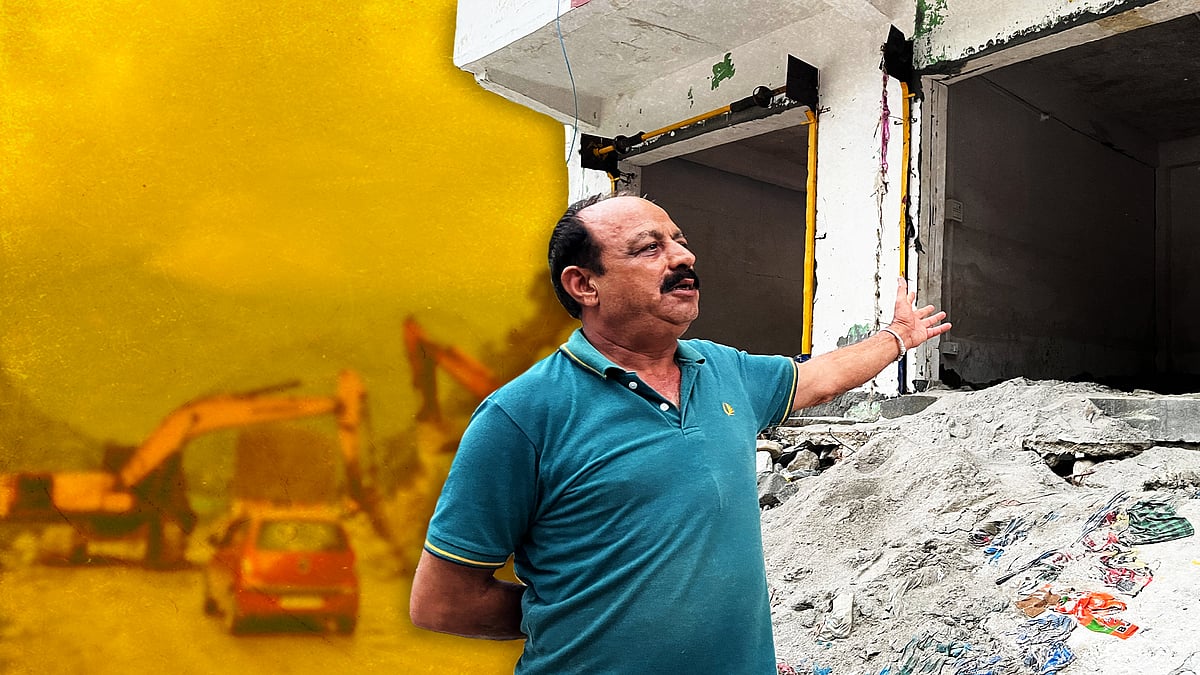‘Hit worse than Covid’: Despair shrouds Himachal’s orchards and hotels after flood
Most of the apple crop has been destroyed and the tourism sector is in bad shape.
Despair looms over apple orchards in Theog, a few kilometres away from Shimla. The first hit was due to irregularities in the weather cycle this year and then the rains and the floods in July dealt the final blow – the final yield is likely to be reduced by two-thirds.
“The continuous rain and flood after July 7 caused great losses. Not only were roads broken but the landslides destroyed many orchards also,” said apple trader Rajendra Singh.
After the erstwhile state of Jammu and Kashmir, Himachal Pradesh is India’s largest apple producing state with more than 20 percent of the country’s apple yield. Most of the apple orchards are located in Shimla, Kinnaur and Kullu districts and the total annual market is worth about Rs 6,000 crore.
Uneven rain, snowfall
Snowfall in Himachal starts in the second half of December but there was little to no snowfall this year and the temperatures and the rain remained uneven. This has affected both the quality and the shape of the fruit.
Apple grows in temperate climates, needing cold weather with gradual warming and even moisture.
“Apples are now being sold at one-fifth the usual price because they lack quality,” said apple farmer Dheeraj Kumar.
As per data from the meteorological department, there was over 400 percent rainfall in these areas between July 7 and July 11.
The state received most of its rainfall in July and this pushed the moisture rate to 90 or 100 percent as against the expected 80 percent, fuelling the growth of fungi and diseases, according to professor SP Bhardwaj, an agricultural scientist and former faculty at the YS Parmar Agriculture University.
“The apple is susceptible to many kinds of diseases, to avoid which, farmers spray medicines. But due to excessive moisture, the spraying is ineffective. Due to the cloud cover, the moisture is unable to evaporate. The apple needs an average temperature of 20 or 21 degrees, but this year it went up to only 18 or 19 degrees, which is why the fruit could not attain its shape.”
While orchards were damaged because of landslides in hilly regions, the farmers are unable to take their yields to the markets because of broken roads.
Chief Minister Sukhwinder Singh Sukhu had announced an increase in compensation for apple traders and an economic package for road repairs.

‘Bigger hit for the economy than Covid’
Meanwhile, the damage to road infrastructure has also impacted the tourism sector, which brings in an annual revenue of Rs 11,000 crore.
“Tourism has never been this bad…all rooms in the hotel lie empty and there are no tourists here despite off-season discounts,” said Pradeep Sharma, a hotel manager in Fagu near Shimla.
The situation is similar across tourist hotspots, from Manali to Mandi and Kinnaur.
According to a recent economic survey, farming and tourism sectors contribute about 17 percent of the state’s GDP and employ 70 percent of its people. In such a case, the impact on these sectors is a big worry for the economy.
Sanjay Chauhan, the co-convenor of the Sanyukt Kisan Morcha, an association of 27 farmer outfits, says that this is a “bigger hit for us than Covid”. “The state government has estimated the losses at Rs 8,000 crore, but according to us, a loss of Rs 12,000 crore has been incurred by agro-horticulture and private farms. The central government should declare it a national disaster. Without help from the centre, we won’t be able to bear this shock.”

Climate change
The Himachal Pradesh government is working on a policy of integrating farming and horticulture and promoting agro-horticulture and eco-tourism, but extreme weather phenomena and effects of global warming are increasing in the region.
Chauhan said that man-made causes are largely responsible for this disaster.
“Encroaching upon rivers for housing and road construction is wrong. But changes in temperature and rainfall patterns is an effect of climate change and this has affected not only farming and horticulture but tourism also in the state,” he said.
Agricultural yields have shrunk, said Chauhan, who added that the state produced five crore boxes of apples in 2010 and this number dipped to half last year.
“There was a drought last year. This February had record temperatures. Then snowfall was disturbed. Earlier, snow used to fall by January and then persist. Now snow is falling in February and it did not even fall this year. It is bound to affect fruits and agriculture,” said Bhardwaj.
Harjeet Singh, the head of global political strategy at the Climate Action Network International, said, “Mountainous areas, such as Himachal Pradesh, are particularly vulnerable to the harrowing repercussions of climate change. The devastating impacts on critical sectors like horticulture and tourism, which play a central role in job creation and underpin the economic health of Himachal Pradesh, starkly reveal the magnitude of imminent climate threats.”
“It’s not just about bolstering our infrastructure and institutions; significant investment in community capacity-building is essential. The resilience of these communities will be paramount as we gear up to address and navigate potential climate-related challenges that could intensify threats to these regions.”
According to Singh, the government must have a joint strategy to deal with growth and climate change. “In light of these warning signs, there’s an urgent imperative to enhance our adaptation strategies. It’s not just about bolstering our infrastructure and institutions; significant investment in community capacity-building is essential.”
Photographs by Hridayesh Joshi.
 ‘River didn’t come to us, we went to it’: How NHAI’s ‘all-weather’ highways eroded in Himachal
‘River didn’t come to us, we went to it’: How NHAI’s ‘all-weather’ highways eroded in Himachal ‘Our lives are set back 25 years’: In Himachal, a village loses everything to floods
‘Our lives are set back 25 years’: In Himachal, a village loses everything to floods